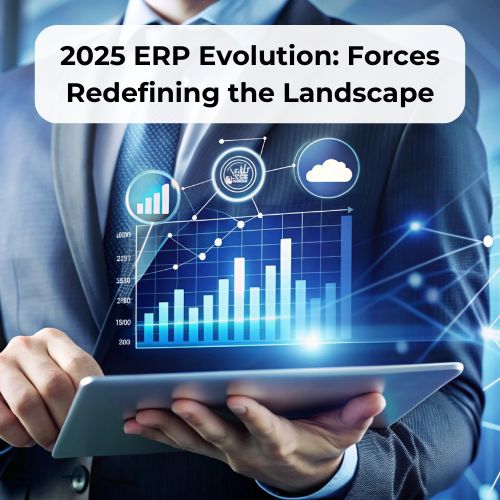2025 ERP Evolution: Forces Redefining the Landscape
In today’s rapidly transforming business environment, Enterprise Resource Planning (ERP) systems are more crucial than ever in helping organizations streamline operations, enhance decision-making, and drive overall business performance. As we approach 2025, ERP systems are set to undergo significant transformations, powered by emerging technologies and evolving market demands. These advancements will redefine how businesses approach resource planning, enabling smarter, faster, and more agile operations.
At 4devnet, we understand the critical role of technology in shaping the future. This article explores the key forces driving the 2025 ERP evolution and offers insights into how companies can leverage these innovations to stay competitive in an increasingly digital world.
1. Cloud-Based ERP: A Cornerstone for Flexibility and Growth
One of the most notable trends driving ERP evolution by 2025 is the widespread shift to cloud-based ERP systems. These solutions offer unparalleled flexibility, scalability, and accessibility, allowing businesses to operate from anywhere, at any time. The cloud enables real-time collaboration across departments, eliminates the need for expensive on-premise infrastructure, and ensures that businesses stay current with software updates.
As more organizations move to the cloud, ERP providers are integrating advanced AI capabilities and machine learning into cloud platforms, helping businesses not only manage operations but also predict trends, optimize workflows, and enhance customer service.
Key Advantages:
- Scalability: Easily scale resources and features as your business grows.
- Cost Efficiency: Lower upfront costs and reduced IT infrastructure expenses.
- Real-Time Access: Access real-time data and insights for quicker decision-making.
2. Artificial Intelligence and Machine Learning: Empowering Smarter Decisions
By 2025, AI and machine learning (ML) will be integral to ERP systems. These technologies will enable businesses to automate processes, predict demand, optimize supply chains, and deliver personalized customer experiences. AI-powered predictive analytics will enhance decision-making, allowing companies to forecast future trends with greater accuracy and agility.
AI will also play a key role in streamlining repetitive tasks such as invoice processing, inventory management, and financial forecasting, reducing manual errors and increasing efficiency.
Key Features:
- Predictive Analytics: Leverage data to anticipate market changes and resource requirements.
- Automation: Automate routine tasks and workflows to free up human resources for strategic activities.
- Personalization: AI will enable ERP systems to deliver personalized insights based on user needs and behaviors.
3. Advanced Data Analytics and Business Intelligence: Data-Driven Insights for Strategic Growth
In 2025, businesses will increasingly rely on advanced data analytics and business intelligence (BI) integrated within ERP systems. By combining real-time data with powerful visualization tools, organizations will gain deep insights into operational performance, financial health, and market conditions. This data-driven approach will empower businesses to make strategic decisions faster, identify inefficiencies, and optimize processes across the board.
At 4devnet, we recognize the value of actionable data. The ability to track key performance indicators (KPIs) in real time will help organizations improve both operational efficiency and bottom-line results.
Key Benefits:
- Real-Time Reporting: Gain immediate access to actionable insights and metrics.
- Operational Efficiency: Monitor performance, identify bottlenecks, and improve workflows.
- Strategic Decision Making: Use data to drive business growth and operational improvements.
4. Robotic Process Automation (RPA): Redefining Efficiency with Intelligent Automation
In 2025, Robotic Process Automation (RPA) will be more prevalent in ERP systems, transforming routine administrative tasks. RPA technology automates repetitive processes such as data entry, financial reconciliation, and compliance reporting, minimizing errors and boosting productivity.
This intelligent automation will free up employees to focus on higher-value tasks while ensuring that operational processes are consistent, efficient, and scalable.
Key Benefits:
- Cost Reduction: Cut down on labor costs by automating mundane tasks.
- Improved Accuracy: Minimize human error and ensure data consistency.
- Time Savings: Enhance productivity by automating time-consuming processes.
5. Blockchain: Strengthening Security and Transparency
The adoption of blockchain technology is set to disrupt ERP systems by 2025, particularly in industries where data security and transparency are critical, such as finance, logistics, and supply chain management. Blockchain offers an immutable and decentralized ledger that ensures the integrity of transactions and data.
By integrating blockchain, ERP systems can offer end-to-end traceability, fraud prevention, and improved compliance—creating a secure and transparent environment for transactions across various business functions.
Key Advantages:
- Enhanced Data Security: Protect sensitive information and reduce the risk of cyberattacks.
- Transparent Transactions: Achieve full traceability of financial and supply chain activities.
- Compliance: Simplify compliance with industry regulations by using secure, transparent transaction records.
6. Internet of Things (IoT): Transforming ERP with Real-Time Asset Management
The integration of the Internet of Things (IoT) with ERP systems will enable businesses to gain real-time insights from connected devices, sensors, and machinery. IoT will allow companies to track assets, monitor equipment performance, and optimize inventory management. By 2025, IoT-enabled ERP systems will help businesses automate and improve decision-making in areas like predictive maintenance and inventory replenishment.
Key Use Cases:
- Real-Time Asset Tracking: Monitor the condition and location of physical assets in real time.
- Predictive Maintenance: Utilize sensor data to predict when equipment needs maintenance, preventing downtime.
- Supply Chain Optimization: Improve inventory management by tracking goods from source to destination.
7. User Experience (UX): A Focus on Intuitive, Role-Based Design
A key factor driving the adoption of ERP systems in 2025 will be a renewed focus on user experience (UX). ERP solutions will prioritize simplicity and ease of use, offering intuitive interfaces and personalized dashboards tailored to the needs of specific users. By improving the UX, organizations will increase user adoption and ensure that employees can fully leverage the ERP system to enhance productivity.
Key Features:
- Intuitive Interfaces: Streamlined designs that reduce the learning curve and improve ease of use.
- Mobile Access: ERP systems will be fully accessible from mobile devices, supporting a flexible, remote workforce.
- Role-Based Dashboards: Tailor views the specific needs of each user, helping them focus on relevant data and tasks.
8. Industry-Specific ERP Solutions: Tailored to Unique Business Needs
By 2025, industry-specific ERP solutions will become increasingly important. Instead of adopting generic solutions, businesses will seek ERP systems that are tailored to the specific challenges and regulations of their industry. Whether in manufacturing, healthcare, retail, or finance, ERP vendors will offer specialized features designed to optimize workflows, improve compliance, and drive growth in specific sectors.
Key Benefits:
- Customization: ERP solutions that are customized for industry-specific needs and regulatory requirements.
- Improved Compliance: Adherence to sector-specific compliance and reporting standards.
- Enhanced Efficiency: Optimized workflows designed for the nuances of each industry.
9. Sustainability and Green ERP: Building an Eco-Conscious Future
Sustainability will be a key priority for businesses by 2025, and ERP systems will evolve to help companies track and manage their environmental impact. Green ERP solutions will allow organizations to monitor their energy consumption, carbon footprint, and supply chain sustainability, supporting eco-friendly practices and compliance with environmental regulations.
Key Features:
- Carbon Footprint Tracking: Monitor emissions and identify areas for improvement.
- Energy Management: Track energy use across operations to reduce consumption and costs.
- Sustainable Sourcing: Ensure compliance with sustainable sourcing and supply chain regulations.
Conclusion: Future-Proofing Your Business with ERP
By 2025, the ERP landscape will be characterized by advanced technologies that enhance flexibility, security, and operational efficiency. From cloud computing and AI to IoT integration and blockchain, ERP systems will play a pivotal role in transforming business operations. As the ERP ecosystem evolves, businesses must adapt to these changes by embracing modern solutions that drive operational efficiency and strategic growth.
At 4devnet, we are committed to providing the insights and tools you need to stay ahead of the curve. By understanding the key forces shaping the future of ERP, organizations can position themselves for success in an increasingly digital-first world.


